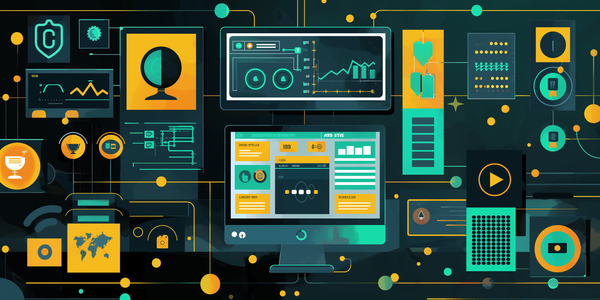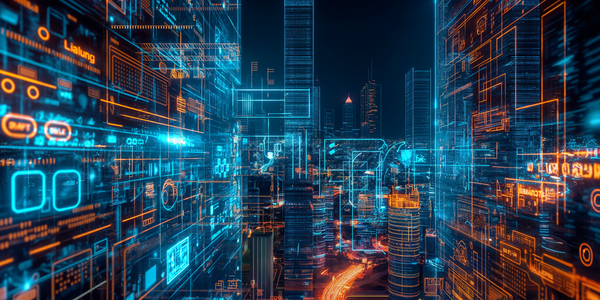AI-Assisted Design: Unleashing Creativity and Innovation Across Industries
In the ever-evolving landscape of creative industries, a transformative force is reshaping the way we approach design, ideation, and innovation. Generative artificial intelligence (AI), a cutting-edge technology that harnesses the power of machine learning and deep neural networks, is revolutionizing creative processes across diverse sectors, from fashion and architecture to product design and advertising.
Accelerating Ideation and Concept Generation
One of the most significant advantages of AI-assisted design lies in its ability to augment the ideation and concept generation stages. Generative AI models, trained on vast datasets of images, text, and creative works, can rapidly produce a diverse array of design concepts, variations, and permutations. This provides designers with a rich pool of ideas to draw inspiration from and build upon, accelerating the initial stages of the creative process.
In the fashion industry, for example, companies like Stitch Fix are leveraging Generative Adversarial Networks (GANs) to create new clothing designs based on customer preferences and trends. This rapid ideation allows designers to experiment with styles and patterns they might not have considered otherwise, fostering innovation and pushing the boundaries of traditional fashion design.
Streamlining Prototyping and Iteration
AI tools can also streamline the prototyping and iteration phases, enabling designers to quickly visualize and refine their ideas. At Airbnb, designers leverage AI to analyze user data and generate optimized product concepts that enhance the customer experience. "We leverage AI to analyze user data and generate optimized product concepts that enhance the customer experience. AI enables us to create highly personalized and user-centric designs at scale," says Karri Saarinen, Director of UX Design at Airbnb.
Moreover, AI-assisted design empowers designers to explore a broader range of design possibilities within a shorter timeframe. Generative AI models can analyze vast amounts of data, identify patterns, and generate novel design solutions that human designers may not have considered, expanding the creative boundaries and fostering innovation.
Industry Applications of Generative AI
Fashion Design and Trend Forecasting
The fashion industry has been at the forefront of adopting AI-assisted design, leveraging the technology for trend forecasting, generative design, and personalized recommendations. Leading brands and designers are harnessing generative AI to create unique patterns, textures, and silhouettes, pushing the boundaries of traditional fashion design.
Stitch Fix's use of GANs to create new clothing designs based on customer preferences and trends is a prime example of how AI can enhance the customer experience while promoting sustainable and ethical fashion practices by reducing waste and enabling on-demand production.
Another notable example is IKEA's collaboration with Space10 to develop AI-generated furniture designs using GANs and other generative AI techniques. This initiative showcases how AI can drive both creative design and strategic business decisions.
Architectural Design Optimization
In the field of architecture, AI-assisted design is enabling more efficient and sustainable design processes. Architectural firms like Autodesk have developed generative design tools, such as Dreamcatcher, which use AI algorithms to generate thousands of design options based on specified parameters and constraints. This technology allows architects to explore a vast design space, identify innovative solutions, and create buildings that are both functional and visually stunning.
Zaha Hadid Architects, known for their futuristic and fluid designs, have also integrated AI into their workflows. By using AI to optimize building designs for energy efficiency, structural integrity, and construction costs, they can create sustainable structures that push the limits of architectural innovation.
As Greg Lynn, an architect and pioneer of AI-assisted design, explains, "The integration of generative AI in architectural design allows us to optimize for complex constraints like energy efficiency, structural integrity, and construction costs. AI expands our creative possibilities while keeping us grounded in functional realities."

Graphic Design and Branding
Graphic design and branding are also witnessing the transformative power of generative AI. AI-assisted tools can create unique logos, layouts, and visual content, helping designers to ideate faster and push creative boundaries.
Nvidia's GauGAN tool, for instance, uses generative AI to create photorealistic landscape images from simple sketches. This tool not only saves time but also inspires designers to think outside the box and create compelling visual experiences.
"Generative AI is a game-changer for the advertising industry. It allows us to rapidly explore diverse creative directions, craft compelling visual narratives, and deliver highly targeted campaigns that resonate with our audiences," notes Susan Credle, Global Chief Creative Officer at FCB Global.
Ethical Considerations and Responsible Practices
As we embrace the potential of generative AI in creative industries, it's crucial to address concerns and considerations surrounding this technology. Some may question the role of human designers in an AI-driven world, while others may worry about the originality and authenticity of AI-generated content. However, it's essential to recognize that generative AI is not a replacement for human creativity but rather a powerful tool that augments and enhances it.
Transparency and Explainability
Transparency and explainability are key ethical considerations in the development and deployment of AI-assisted design tools. Designers and end-users should have a clear understanding of how these systems work, what data they were trained on, and how decisions are made. This transparency fosters trust and accountability, ensuring that AI-generated designs align with ethical principles and societal values.
Researchers and developers are actively working on developing AI systems that are more interpretable and explainable, allowing for greater transparency and understanding of the decision-making processes.
Accountability and Potential Biases
The integration of AI in creative workflows also raises questions about accountability and potential biases. AI systems can inherit and amplify biases present in the training data or algorithms, leading to unfair or discriminatory outcomes. It is essential for designers and developers to be aware of these risks and implement measures to mitigate biases, such as diverse and representative training data, rigorous testing, and ongoing monitoring.
Organizations like the AI Now Institute at New York University are conducting research and advocating for accountability and ethical practices in the development and deployment of AI systems, including those used in creative industries.

Intellectual Property and AI-Generated Content
The use of AI in creative processes also raises complex questions about intellectual property rights. As AI systems generate novel designs, artworks, or other creative content, there is a need for clear guidelines and frameworks to protect the rights of designers, artists, and content creators, while also acknowledging the contributions of AI systems in the creative process.
Initiatives like the World Intellectual Property Organization (WIPO) Conversation on Intellectual Property (IP) and Artificial Intelligence are exploring these issues and working towards developing international policies and best practices for managing IP rights in the age of AI.
Human-AI Collaboration and the Future of Creative Work
As AI-assisted design continues to evolve, it is essential to consider the future of creative work and the role of human-AI collaboration in shaping this landscape. Effective human-AI collaboration models should leverage the strengths of both human intuition and AI capabilities, fostering a symbiotic relationship where AI augments and enhances human creativity, rather than replacing it entirely.
Educational institutions and professional organizations are recognizing the need for upskilling and training programs to equip designers, artists, and creatives with the necessary knowledge and skills to effectively leverage AI tools and collaborate with AI systems.
By fostering collaboration between human designers and AI systems, we can unlock new levels of innovation and push the boundaries of what's possible in creative industries.
Conclusion
Generative AI is revolutionizing creative industries by augmenting human creativity with advanced AI capabilities. From accelerating ideation and prototyping to enabling efficient design exploration, AI tools are empowering designers to unlock novel possibilities and push the boundaries of innovation.
However, the integration of AI in design workflows also raises ethical concerns around transparency, accountability, and intellectual property rights that must be addressed for responsible adoption. A human-centered approach is crucial, positioning AI as a collaborative tool to enhance, rather than replace, human creativity and design expertise.
As the applications of AI-assisted design continue to expand across industries like fashion, architecture, product design, and advertising, it is essential for businesses to embrace this transformative technology responsibly, prioritizing ethical practices, transparency, and a commitment to continuous learning and improvement.
By striking the right balance between leveraging the power of AI and preserving the human element in the creative process, businesses can unlock new realms of innovation, efficiency, and customer-centric design solutions that drive success in the age of AI.
Let us welcome this AI-assisted design revolution with open arms and explore the limitless potential it holds for transforming our world.
Disclosure: This post was co-created by a human author and an AI content generation tool. The AI generated the initial draft, which was then reviewed, fact-checked, and edited by the human author before publication. While we strive for accuracy, AI can occasionally produce errors. We welcome your feedback on our use of AI in content creation.





